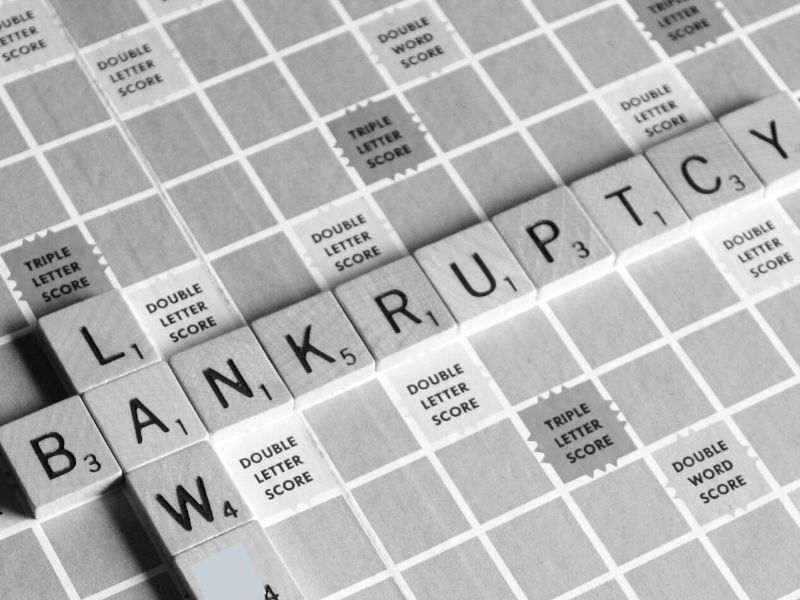A bankrupt no more (Part 1) - Discharge of Bankruptcy Order
by Abigail Shobana Numbalker & Sean Tan Yang Wei ~ 29 June 2022
Introduction
Based on the limited information available, one would say that the cause of bankruptcy in Malaysia is attributed to non-payment of loans, non-payment of judgment sums and bankrupts having been guarantors for a loan which the borrower defaulted on. Many think that once you are a bankrupt there is no possibility of “getting your life back” unless the bankrupt has fully settled the debt owed. In this series of “A Bankrupt No More”, we will be setting out the ways and means by which one may be able to break free from their bankruptcy status.
There are generally two different applications a bankrupt can opt for to remove the bankruptcy status and they are either by way of a Discharge Application pursuant to section 33, 33A and 33C of the Insolvency Act 1967 (“IA 1967”) or an Annulment Application pursuant to section 105 IA 1967. The differences between the two Applications can be seen in the following table:
| Discharge Application | Annulment Application |
|---|---|
|
Relieves you from all of your debts provable in bankruptcy except debts due to the Government, State and Attorney General |
Relieved from all debts |
|
You will still be known to have been a bankrupt at one point but are no longer one. |
You will be treated as if you were never made a bankrupt. |
|
It is a discretionary power in which the Courts and the DGI would usually consider the following factors:
|
Usually considered in the following situations:
|
Table 1
Discharge Application
For the purposes of the article herein, we will be focusing on the Discharge Application. Pursuant to the IA 1967, there are three different ways for a bankrupt to discharge themselves as seen in the table below:
| Method of Discharge |
Discharge by order of court (section 33 IA 1967) |
Discharge by Certificate of DGI (section 33A IA 1967) |
Automatic Discharge (section 33C IA 1967) |
|---|---|---|---|
| How to apply? | Application via court | Application via DGI | DGI will automatically issue a notice of discharge to the creditors provided that the requirements have been satisfied. |
| When? | Any time after the bankruptcy order | 5 years after the bankruptcy order | 3 years after the submission of the statement of affairs |
| Factors of consideration | Court is reliant on DGI’s report regarding the bankrupt’s conduct | Purely subject to the DGI’s discretion |
Only if:-
|
Table 2
Table 2 does not only point out the differences between the three methods of discharge application but doubles as a basic guideline for the Court/DGI to follow when faced with a discharge application by a bankrupt.
Discharge Application – Court Order
Factors considered by the Court, pursuant to Re Mohana Sundari
When applying for a discharge application by order of a court, the court seems to consider the following pursuant to the case of Re Mohana Sundari d/o M Subramaniam [2004] 5 MLJ 227:
- What does the DGI report say about the bankrupt’s conduct and affairs?
- What was the cause of his bankruptcy?
- How was the bankrupt’s conduct in relation to his bankruptcy?
- How was the bankrupt’s conduct after being made a bankrupt?
- How would the discharge of the bankrupt affect public interest and commercial morality?
("Re Mohana Consideration")
It is rather noticeable from the Re Mohana Considerations that no minimum amount of debt was laid out. While the statute is silent on this, the following cases had this to say:
- Re Mohana: “the amount of debt still owing to the creditor is not a factor which the court should place too much reliance”.
- Re Siah Ooi Choe; ex p Hongkong Shanghai Banking Corporation [1998] 1 SLR 903: “…The huge amount of debt here merely reflected the fact that a big business when it failed, tended to fail in a big way and it was in recognition of this fact that no maximum”
The courts do recognise that the amount of debt owed by a bankrupt does not dictate whether or not he should be discharged from his bankruptcy. This was applied in the case of Ng Kok Wah v UMW Industries [1995] 2 CLJ 284. In Ng Kok Wah, the court still discharged the bankrupt despite the sizeable amount of debt owed to the creditor.
However, only when the bankrupt fails to carry out his duties to the DGI amounting to an offence under the IA 1967, would the bankrupt have to pay at least 50% of the dividends to the creditor before applying for a discharge by way of court order (section 33(4) IA 1967).
Coming back to the Re Mohana Considerations, the DGI’s report naturally covers all four of the Re Mohana Considerations except public interest and commercial morality. Some examples of a bankrupt’s conduct that would be viewed favourably by the Court in a discharge application are as follows:
- Bankrupt attends the first meeting of his creditors and any subsequent meeting with his creditors which the DGI requires him to attend (section 27 IA 1967);
- Bankrupt submits statement of affairs within 7 days from the bankruptcy order (voluntary bankruptcy) or 21 days from the bankruptcy order (creditor’s petition) (section 16 IA 1967);
- Bankrupt discloses all monies and property that are in his possession once every six months to the DGI; and
- Bankrupt pays the agreed monthly instalments diligently.
With regards to the 5th Re Mohana Consideration, the courts are ultimately guided by the Court of Appeal case, Lim Tee Keong v HLG Securities Sdn Bhd [2016] 3 MLJ 201 which held the following:
“…in considering whether or not to grant the discharge, the court has to balance two conflicting concerns. The first concern is that it would be undesirable to let those who became bankrupt off the hook if they have brought about their bankruptcy by dishonest business dealings, rash and extravagance in living and if they have conducted their business affairs to the detriment of their creditors. The other concern is exactly the opposite: it would be in the interest of society and commercial morality that people who have become bankrupt through little fault of their own but just being caught at the wrong turn of the economic cycle be given a second chance in life.”
“…the discretion to be exercised by the court under s 33(3) is wide and it is ‘fettered only with the consideration of equity, fairness and good conscience’ and that a bankrupt should not be put under bondage for his entirety.”
This would appear to apply to situations where the inability to pay was caused by circumstances out of the bankrupt’s control, i.e. global or national financial crisis, retrenchment, etc. Where the bankrupt’s inability to pay back the creditors was caused by his own choices, discharging the bankrupt without settling a reasonable amount of the debt would cause the courts to reject or dismiss the bankrupt’s application to discharge himself from bankruptcy.
Other Factors Considered by the Court
Further, it should be noted that there are other factors the courts would consider based on case law and they are as follow:
- Age and income of the bankrupt: The following are examples of individuals who have been discharged from bankruptcy:
- 71-year-old housewife (Re Siow Ah Moi [2007] 3 MLJ 713);
- 64-year-old retiree (Re Ang Ah Kang [1994] 2 CLJ 738);
- 55-year-old housewife who used to be a company director and the wife of a former Member of Parliament who was receiving a meagre pension (Re Rasidah Ibrahim [2008] 9 CLJ 530);
- A 42 year old housewife (Re Chong Kim Far [2013] 10 MLJ 500).
- Health of the bankrupt: In Re Siow Ah Moi, the court was sympathetic to a bankrupt who was suffering from ill health.
- Conduct of the creditor: In the case of Public Bank Bhd v Kok Lee Wah, the creditor’s appeal against the discharge was dismissed. The judge in delivering his judgment noted that the creditor had declared the bankrupt’s property at a reduced price of RM290,000 when it was valued at RM600,000.
- Number of opposing creditors: The courts are more likely to allow a discharge application if it is not opposed by the majority of the creditors or by the major creditor (Ng Kok Wah v UMW Industries (1985) Sdn Bhd [1995] 2 CLJ 284).
If you are a bankrupt and find yourself satisfying all the above criteria, you may apply for a discharge of your bankruptcy by way of a court order. The other two methods of discharge will be explored in the next article.


